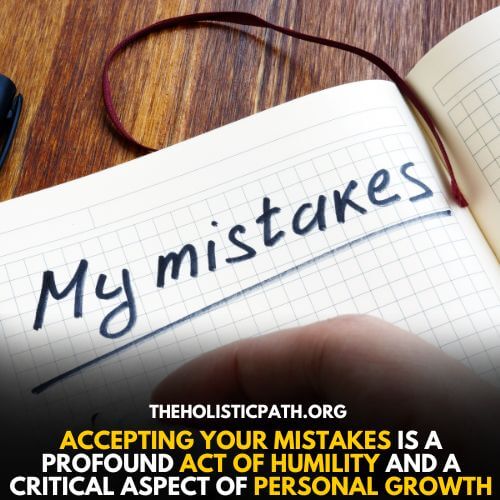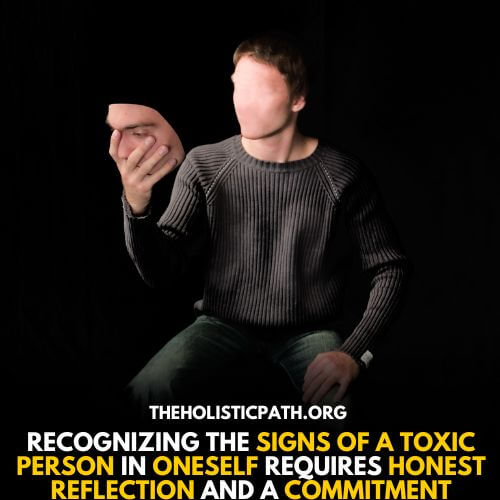Toxic Behavior: What Is It?
Toxic behavior is when you do things that bring negativity around you. It could be unintentional, like saying something hurtful without meaning to, or it could be consistent negativity, making friends and family stay away.
It’s important not to let occasional bad actions become a big part of who you are.
Surprisingly, extremely toxic people can change for the better if they sincerely try. This means understanding yourself better and being nicer to others. It’s not always easy; you need to be patient with yourself and get support from friends and family.
But making an effort to be kind is actually worth it in the end for everyone involved.
10. Think Before You Act
Toxic people often react impulsively, letting their emotions dictate their actions. The phrase “Think before you act” becomes a crucial guiding principle in steering away from toxic behavior. Taking a moment to pause and reflect on the potential impact of your words or actions is like putting a brake on impulsive reactions.
This practice is deeply rooted in self-awareness, a foundational element in the journey of how to not be toxic. By considering how your actions might affect others, you contribute to creating healthier interactions and more positive relationships.
11. Admit When You Make a Mistake
Acknowledging mistakes is a profound act of humility and a critical aspect of personal growth. In the journey of how to deal with a toxic person, admitting when you’ve made a mistake goes beyond a mere apology; it involves taking full responsibility.
This step aligns seamlessly with the overarching concept of how to stop being toxic.
By acknowledging errors, you demonstrate humility and actively contribute to fostering positive relationships. It’s a practice grounded in self-awareness and a commitment to continuous improvement.

12. It’s Okay to Show Your Feelings
Expressing emotions is a natural part of being human. The statement “It’s okay to show your feelings” emphasizes the importance of embracing and communicating your emotions openly. In the context of how to stop being toxic, allowing yourself to express feelings authentically fosters genuine connections with others.
Practicing mindfulness in these moments, which involves being present and aware of your emotions without judgment, is one of the easiest ways to stay in touch with your feelings. Mindfulness enables thoughtful responses, promoting a healthier emotional exchange.
13. Be Nice to Yourself
In the journey of breaking free from toxic behavior, it’s crucial to treat yourself with kindness. Being nice to yourself goes beyond the concept of self-care; it’s a dedicated commitment to personal growth.
This practice is a must for anyone exploring how to not be toxic as it plays a significant role in fostering a more positive and supportive inner dialogue. By extending kindness to yourself, you build a foundation of self-love and understanding, essential elements in cultivating a healthier mindset.
14. Stick to What You Believe In
Remaining true to your values acts as a potent antidote against toxic behavior. When faced with challenges, sticking to what you believe in becomes a non-negotiable. This principle sets clear boundaries for acceptable behavior, offering guidance in dealing with toxic people and steering clear of the pitfalls of a bad relationship dynamic.
Staying steadfast in your values not only defines your character but also provides a compass for navigating relationships positively and authentically.
15. Don’t Let Your Pride Get in the Way
Ego can pose a significant hurdle in the quest for how to stop being toxic. While pride has its rightful place, allowing it to dictate your actions can lead to toxic behaviors. It’s essential not to let your ego hinder your personal growth.
Understanding the role of pride is often identified as one of the easiest ways to navigate away from toxic behavior.
It involves recognizing when to stand firm in your convictions and when to be flexible for the sake of positive interactions. By keeping your ego in check, you create room for personal development and maintain healthier relationships with those around you.

Why Am I Toxic and How to Change?
If you find yourself wondering, “Why am I toxic?” it’s a crucial first step towards self-awareness and positive change. Recognizing the signs of a toxic person in oneself requires honest reflection and a commitment to personal growth.
Self-awareness plays a key role in understanding the root causes of toxic behavior. Often, negative patterns stem from past experiences or unresolved emotions. While it may be challenging, acknowledging these factors is essential.
To break free from toxic habits, consider the following steps:
-
Practicing mindfulness: Cultivating awareness of your thoughts and actions is one of the easiest ways to address toxic behavior. Regularly check in with yourself to identify negative patterns.
-
Establishing Boundaries: Clearly define and communicate personal boundaries. This not only helps in preventing toxic behavior but also sets the foundation for healthier relationships.
-
How to deal with a toxic person: If you recognize toxic behavior in others, you may be able to influence positive change by expressing concerns and encouraging open communication. However, if the relationship becomes a bad one, it might be necessary to find a way to limit your exposure.
-
How to not be toxic: Make a conscious effort to replace negative behaviors with positive ones. You might need to seek support from friends, family, or professionals as you try to break free from toxic patterns.
Remember, change is a process, and you must be patient with yourself. Often, addressing toxic behavior involves a combination of self-reflection, seeking support, and making intentional choices about how to stop being toxic. By taking these steps, you can gradually transform negative patterns into a more positive and fulfilling way of living.
How to Stop Being Toxic in a Relationship? 5 Best Tips
To stop being toxic in a relationship, start by admitting when things aren’t going well. Talk openly with your partner, showing you want to make things better. Here are a few more things you can do:
-
Active Listening: Make a point to listen carefully to what your partner is saying. Try to understand their feelings without getting defensive. This shows you’re serious about changing.
-
Regular Check-ins: Plan regular times to talk with your partner about how things are going. This helps catch problems early and keeps negative feelings from piling up.
-
Get Professional Help: If things are tough, think about getting help from a couples therapist. They can give you both tools to communicate better and understand each other.
-
Personal Growth: Show you’re serious about getting better by doing things to improve yourself. This could be reading about relationships, going to workshops, or even talking to a therapist on your own.
-
Set Rules Together: Work together to decide on rules that make your relationship healthy and respectful. Agree on what behavior is okay, making sure both of you feel valued and treated well.
How to Stop Being Toxic at Work? 6 Things You Must Try
To cultivate a more positive work environment and cease toxic behaviors, consider the following steps:
-
Acknowledge Negative Behaviors: Reflect on any harmful actions and take ownership of them. This demonstrates your commitment to personal growth and positive change.
-
Promote Team Collaboration: Actively participate in team activities, acknowledge and celebrate others’ contributions, and foster a sense of unity. This collaborative approach creates a more harmonious workplace.
-
Constructive Communication: Be mindful of how you communicate. Provide positive and constructive feedback, prioritize transparent communication, and encourage open dialogue.
-
Show Empathy: Understand and support your colleagues by acknowledging their perspectives and feelings. This fosters a compassionate workplace culture.
-
Manage Stress Effectively: Develop healthy stress management strategies, such as exercise or mindfulness, to avoid negatively impacting your work environment. Effective stress management contributes to a positive atmosphere.
-
Seek Feedback: Proactively seek input from colleagues and superiors about your behavior. Use this feedback as a tool for improvement, showcasing your dedication to positive change and continuous personal development.
Takeaway
To sum it up, leaving behind toxic habits is all about personal growth and building healthier relationships, both at work and in your personal life. Being aware of yourself, communicating positively, and showing understanding to others set the stage for a happier life. Remember, the change starts with you, and as you make these positive shifts, it can make a good impact on those around you, leading to a more enjoyable journey in life.
